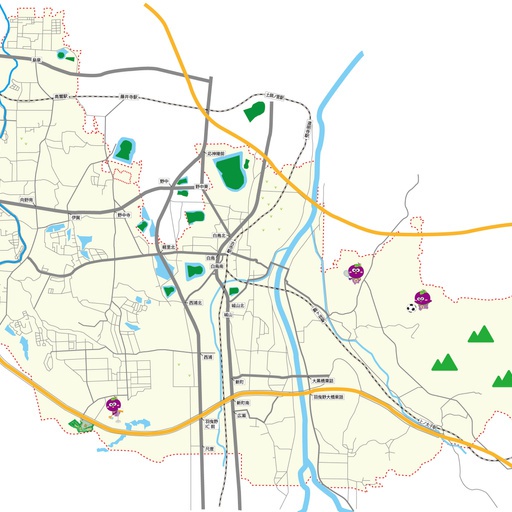羽曳野市観光マップ

大阪府の南河内に位置する羽曳野市内の観光スポットやレジャー施設など、見どころが詰まったマップです。世界遺産と日本遺産のあるまち羽曳野を、是非お楽しみください。
 Posted by羽曳野市魅力づくり推進課更新日:
Posted by羽曳野市魅力づくり推進課更新日: すべてのスポット情報
16件のスポット
 古墳
古墳

古市古墳群の西南部に築造された墳丘長96mの前方後円墳で、北側のくびれ部から前方部側面にかけて、長大な造出しがあります。後円部では石室が確認され、多くの副葬品が発見されました。銀や鹿角の装飾がある太刀をはじめ、武器や武具・馬具、金銅製の冠帽や帯金具、ガラス玉や石製玉類など3,700点以上が出土しています。造出し付近の内濠から、石見型木製品と呼ばれる、儀仗をかたどったと考えられる大型の木製品が出土しています。副葬品や埴輪の特徴から古墳は5世紀末頃に築造されたと考えられます。周囲は峰塚公園として、市民の憩いの場になっています。 公式サイト 住所:羽曳野市軽里2丁目
 史跡
史跡
 寺社仏閣
寺社仏閣

聖徳太子の命により、蘇我馬子が建立したと伝えられ、「中の太子」とも呼ばれています。金銅弥勒菩薩半跏像(こんどうみろくぼさつはんかぞう)は重要文化財に指定され、境内には塔や金堂の跡が残っています。 公式サイト 住所:羽曳野市野々上5丁目9-24

康平7(1064)年、東北地方への遠征を終えた河内源氏の源頼義らが、石清水八幡宮の神霊を勧請し創建されました。源義家の愛用という鎧や太刀が伝えられ、境内には樹齢800年を超えるクスノキがそびえ立っています。 公式サイト 住所:羽曳野市壺井605-2

寺伝によれば、役小角(えんのおづぬ)が掘った大黒天像を祀る堂を建てたのが始まりとされています。境内には七福神の石像が建ち並ぶ壮大な風景を見ることができ、法堂には観音様も祀られ河内西国八番札所にもなっています。 公式サイト 住所:羽曳野市大黒499
 公園
公園

中央スポーツ公園は多目的グラウンドやウォーキングロードなどの設備があり、様々な用途でご利用いただけます。併設の市民プールは令和4年の7月にオープンし、羽曳野市ご当地キャラクター「つぶたん」の遊具などが設置されています。 公式サイト 住所:羽曳野市伊賀5丁目6
 その他
その他

古市古墳群及びその周辺から出土した遺物を展示しています。展示品の中心は埴輪で栗塚古墳出土の家形埴輪、冠帽形埴輪、軽里4号墳から出土した石見型埴輪、その他白鳥陵古墳や安閑天皇陵古墳から出土した埴輪を見ることができます。 また峯ヶ塚古墳から出土した装飾品なども展示しています。 公式サイト 住所:羽曳野市白鳥3丁目12
